Estimated reading time 16 minutes, 13 seconds.
The wildfire season is getting longer and more intense.
Climate change is forcing wildfire agencies around the world to continuously update their fire control techniques, and is driving aerial firefighting agencies and operators to invest in new-generation, land-based airtankers and amphibious skimmer aircraft.
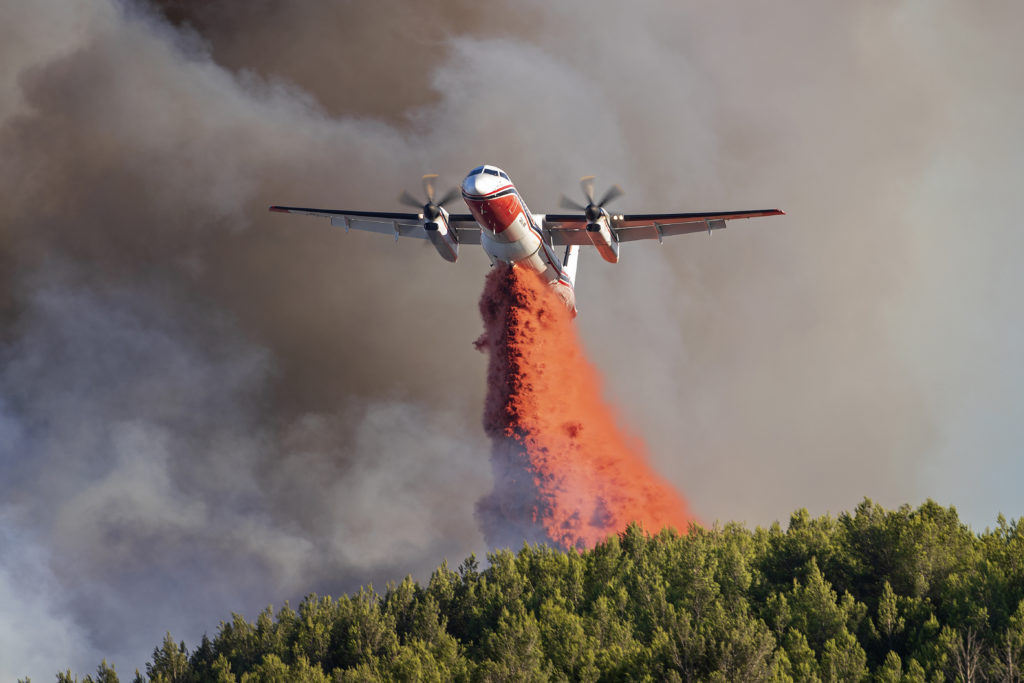
Conair Group Inc. — the world’s largest aerial firefighting company — is leading this charge with a commitment to convert at least three more new De Havilland Dash 8-400s into Dash 8-Q400MR multi-role aircraft for international customers, and 11 former Flybe Dash 8-400s into Dash 8-Q400AT airtankers to renew its own fleet.
“We evaluated 29 aircraft before selecting the Dash 8 Q400 for modification into an aerial firefighting tool,” said Jeff Berry, director of business development at Conair. “The unanimous opinion of our flight operations experts was that the Dash 8 Q400 exceeds all the next generation performance criteria within a maneuverable and stable platform.”
Conair has been supressing wildfires and supporting firefighters for over 50 years. Originally known as Conair Aviation Ltd., the company was formed in 1969 as a subsidiary of Skyway Air Services of Langley, British Columbia, operating with 35 employees and 19 aircraft in its early days.
While it started out as both a budworm spraying and aerial firefighting business, Conair saw a significant expansion in the decades that followed with its capabilities and services in the aerial firefighting sector, as well as its fleet.

Fast forward to 2021, and nearly a dozen more Dash 8-400s — powered by 5,000-shaft-horsepower Pratt & Whitney Canada PW150A turboprop engines — are joining Conair’s diversified fleet of over 70 aircraft.
Conair — based in Abbotsford, British Columbia — plans to convert the aircraft into airtankers, dubbed the Dash 8-Q400AT, engineered specifically for firefighting. The new aircraft will join the company’s two existing Dash 8-Q400ATs, along with eight Convair 580s, 10 Avro RJ85s, four CL-415 amphibians, four CL-215Ts (Alberta government-owned, Conair-serviced/operated), nine Air Tractor AT-802 landplanes, 14 Air Tractor AT-802 Fire Boss amphibians, nine Turbo Commanders, and six Cessna Grand Caravans.
Multi-Role Machine
Conair started modifying and certifying airtankers in the 1970s. Then in 2004, it won a contract from the Government of France to develop the Dash 8-Q400MR multi-role aircraft that could fly a variety of missions beyond aerial fire control.
The Dash 8-Q400MR was the first aircraft in the world to be certified by the FAA and EASA to carry passengers, cargo, and fire retardant. The Q400MR can be used for aerial fire control during the summer months, and outfitted with a quick-change interior so it can be used as a passenger (64 seats), cargo (nine tonnes), or combi aircraft (19 seats along with freight) for other missions during the rest of the year.
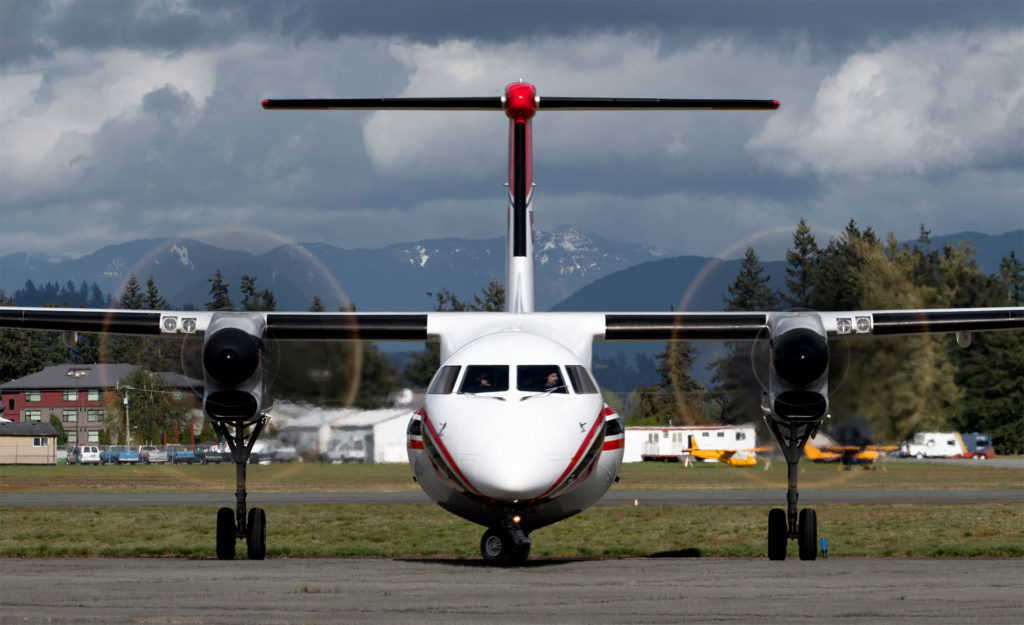
Bombardier’s Toronto-based engineers did the aerodynamic design on the tank under the Q400 fuselage, wrote the flight test program, and did the loads and dynamics analysis of the fuselage with the tank attached to it.
It started with two former SAS Commuter aircraft built in 2001 that were modified by Conair in Abbotsford so they could be reconfigured in just three hours between missions — with the external retardant tank designed so it could be removed when not required.
The aircraft entered service with Sécurité Civile in March 2006 and have since logged over 8,000 hours on a variety of missions, with a dispatch reliability rate of 98.5 percent.
In 2016, Sécurité Civile invited competitive bids to replace its aging fleet of nine single-pilot Turbo Firecats that were approaching their structural life limit of 25,000 hours. In July 2017, the French government announced it was going to buy six more Dash 8-Q400MRs, dubbed the “Fireguard,” which would join two Q400s already existing in the fleet. The first new Q400MR was delivered to France in June 2019, with the third delivered in March 2021.
Three more new Dash 8-Q400MRs are on order for France. Although De Havilland Canada said in February it will “pause” Dash 8-400 production once the aircraft currently on order are delivered in 2021, Conair said it has already purchased the necessary aircraft to fulfill Sécurité Civile’s order.
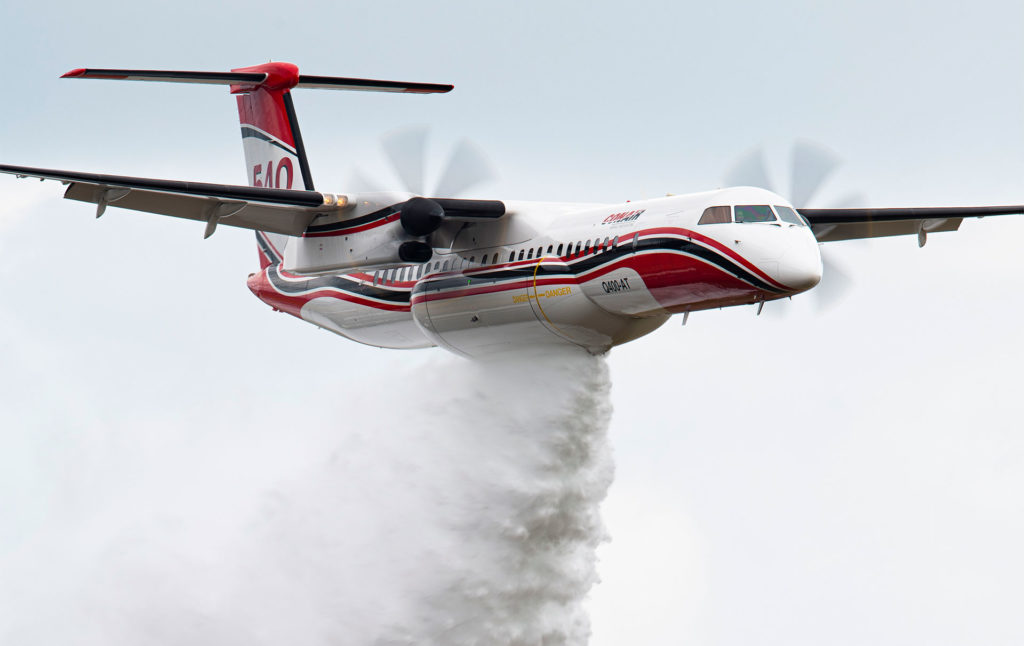
France’s new Q400MR Fireguard aircraft are capable of carrying almost three times the retardant of the Turbo Firecats they replaced. The Dash 8-Q400MR and Q400AT are quite similar in design, and both feature an external 10,000-liter (2,642-US gallon) tank.
The Q400MR conversion now takes place in two steps. Conair subcontracted Flying Colours Corp. to install the quick-change interior — which now comprises five roles: firefighting, passenger, cargo, combi, and medevac — at its completion center at Spirit of St Louis Airport, Missouri. (The medevac interior is a new capability for the Q400MR and includes six stretchers, paramedic stations, and life support equipment.) Then Conair installs the retardant tank and other mission equipment at Abbotsford.
Conair is now marketing the Dash 8-Q400MR based on both new and used airframes to emergency response agencies around the world that want an aircraft they can use year-round for a range of missions. This allows the aircraft acquisition costs to be spread out over a full year of operations.
Advanced Airtanker
Over to the Q400AT, Conair decided in 2019 that the time was ripe to develop a Dash 8-400 airtanker that would complement its “next generation” Type 1 Avro RJ85 in its own fleet — and address a capability gap in other markets. So, Conair purchased two Dash 8-400s previously flown by Heli Malongo in Angola.
The aircraft were flown to Abbotsford, where Conair engineers undertook a major weight reduction program that saw the removal of unnecessary equipment — including the entire passenger interior (seats, sidewalls, floors, ducts, wiring, and lavatories) — until the aircraft were nothing but an “empty shell inside,” said Berry.
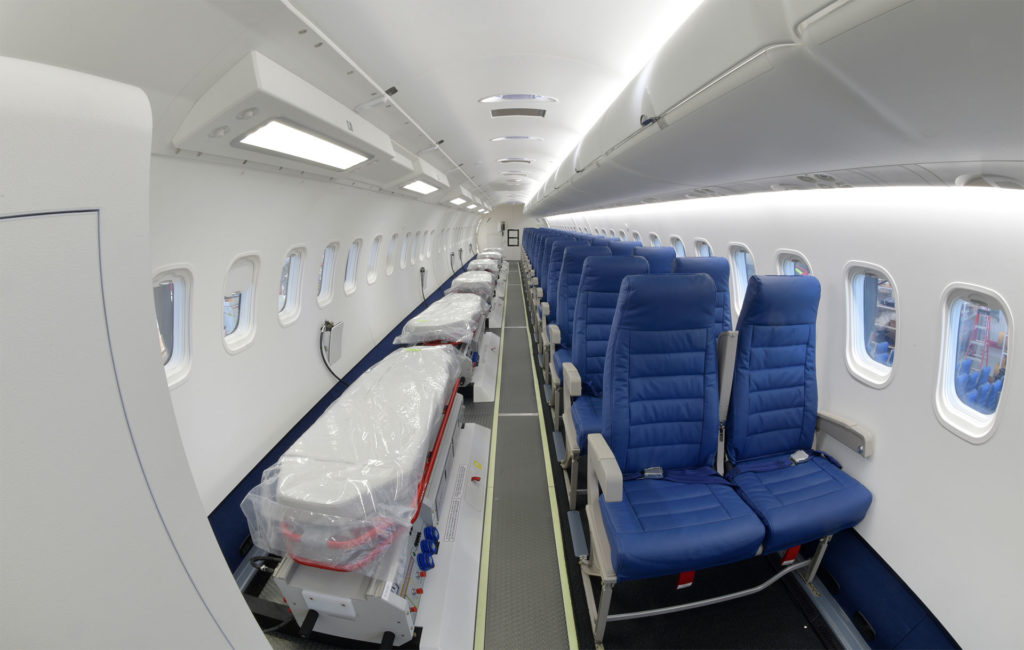
The Conair Dash 8-Q400AT is classified as a U.S. Forest Service (USFS) Type 2 airtanker with a 10,000-liter capacity, 3.5-hour endurance, and the ability to operate unrestricted from 5,000-foot (1,524-meter) runways that larger airtankers can find challenging.
“Our goal was to make the airframe as light as possible to achieve the maximum payload of retardant and fuel while operating from a 5,000-foot-long runway,” explained Berry. “We had already made significant investments over the years developing the Q400MR, so it wasn’t nearly the mountain to climb as if we started fresh.”
He added that the Dash 8-400 airtanker “is the perfect compromise to replace any of the Type 1 and Type 2 airtankers that are out there.” The aircraft offers the “tactical flexibility” to “plug and play” from existing tanker bases.
“That makes it easier for wildfire agencies to move up to a larger aircraft without having to eliminate a tanker base from their strategic infrastructure because the runway is not long enough.”
The Q400AT uses the same innovative retardant tank design as the Q400MR. Conair’s preference has always been to utilize an external tank so the cabin remains pressurized and climate controlled, creating a safer environment for pilots by reducing fatigue. The tank is wrapped around the sides of the fuselage as high as possible so there is head pressure on the exiting load “right to the last drop.” This provides the constant flow required to get the desired coverage levels, said Berry.
A key metric in aerial firefighting is the ground coverage level, which is measured in US gallons per 100 square feet. Coverage Level 1 (1 US gallon per 100 sq. ft.) is usually enough to contain a grass fire in minimal wind. Higher coverage levels are required for different kinds of fuels and fire conditions, with Coverage Level 8 (eight US gallons per 100 sq. ft.) — the highest level — allowing the retardant to penetrate the canopy of dense forests.
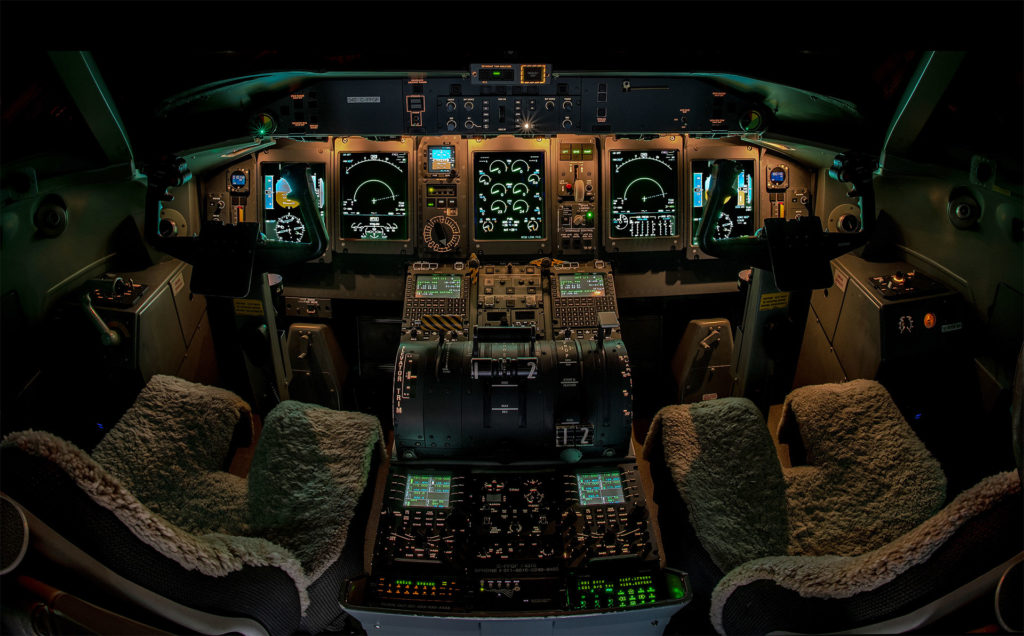
Panel and Emergency Drop control, “DROP” buttons located inboard on each control yoke, and more. Jeff Bough Photo
The Q400AT cockpit interface consists of a Retardant Tank System Control Panel located on the central instrument panel; Retardant Tank Indicator Panel and Emergency Dump control located on the central glareshield; and “DROP” buttons located inboard on each control yoke. The variable flow control retardant delivery system on the aircraft offers maximum flexibility for control of ground coverage level and quantity of retardant dropped.
The Q400AT is also outfitted with a Flight Envelope Awareness System, which provides pilots with enhanced safety awareness information such as instantaneous G-Loading, slow speed awareness, and angle-of-attack information; an Enhanced Flight Vision System is available (providing an image in the visible or infrared spectrum on the head-up display), as well as a Cobham Aviator 700 inflight connectivity system. This system enables flexible communications, connectivity, and flight tracking via the Inmarsat SwiftBroadband network.
Conair conducted static flow tests of the new Dash 8-Q400AT tank in December 2019, which is one of the requirements to obtain Interagency Airtanker Board (IAB) certification (IAB certification is considered critical for federal and state contracts in the U.S.). The aircraft was scheduled to drop retardant onto a grid of cups at Lancaster, California, in early 2020, but the “grid test” has been postponed due to the COVID-19 pandemic. The amount of retardant in each cup is measured to determine the amount of retardant reaching the ground at a particular coverage level.
Big Market
Conair believes a large market exists for the Type 2 Q400AT airtanker; it’s an impressive machine since it can carry 88 percent of the retardant load of a typical Type 1 airtanker, but only consumes 58 percent of the fuel of the larger aircraft per hour — which results in lower fuel bills and greenhouse gas emissions.
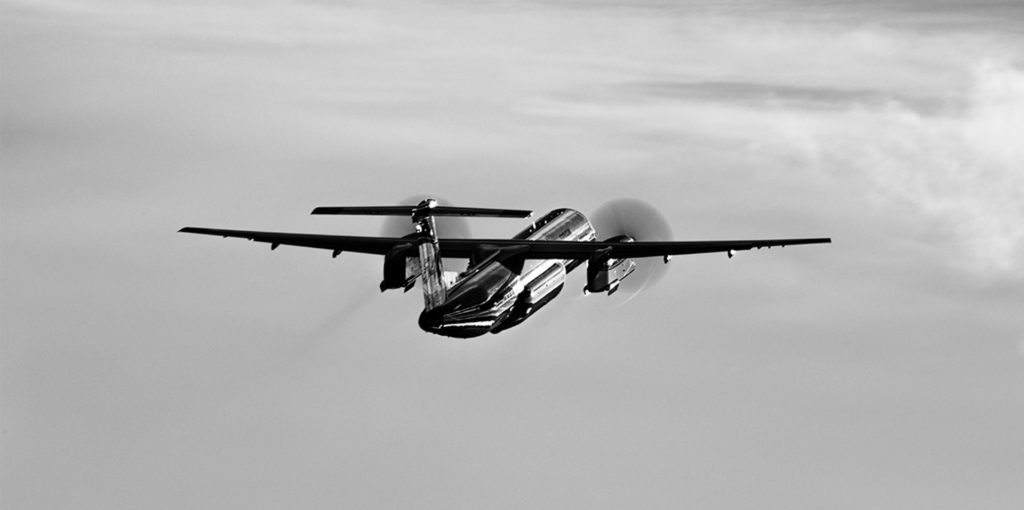
The first two Q400ATs were available to fight fires in B.C. last year, but the fire season was much quieter than the 10-year average — with only 141 airtanker missions carried out.
This means the first operational deployment of a Q400AT against a wildfire was in Australia, where the Queensland Fire and Emergency Services contracted an aircraft from Sept. 1 to Dec. 19. While the 2020-2021 fire season was quieter than normal, the most notable Q400AT assignment was the complex K’gari-Fraser Island bushfire, where crews dropped roughly 200,000 liters (52,834 US gallons) of biodegradable fire suppressant.
In an unexpected twist, the pandemic has actually accelerated Conair’s Q400AT fleet renewal program since several regional airline fleets in Europe were grounded, which released a large number of Dash 8-400s to the market at reasonable prices.
In January 2021, Conair purchased 11 Dash 8-400s that were previously operated by Flybe — the largest Dash 8-400 operator in the world — which folded on March 5, 2020, grounding 54 aircraft. All totalled, four regional airlines in Europe parked their Dash 8-400s, creating a buyer’s market.
In 2020, Conair commenced a new 10-year B.C. Wildfire Service (BCWS) contract (with five potential one-year extensions) that includes a plan to transition the fleet to new-generation aircraft over a five-year period — “which should result in higher aircraft availability for our customer,” said Berry.
The first aircraft replaced is the now-retired Lockheed L-188C Electra with a 12,490-liter (3,300-US gallon) tank, which Conair introduced in 2011 to provide higher coverage levels for lightning strike fire containment and to penetrate through dense forest canopies.

The first Dash 8-Q400AT started its contract in early May at the BCWS tanker base at Fort St. John Airport, and will move to Abbotsford in July. Two more Q400ATs are scheduled to enter service with BCWS within the next three years, and will replace three Convair 580s once the Dash 8-Q400ATs are manufactured in Abbotsford.
This is probably the first time that passenger and airtanker aircraft of the same model will be operating from the same airports in Canada.
One Conair Q400AT began flying in Alaska on a 90-day contract with the Alaska Department of Natural Resources (DNR) in May, replacing one of two Convair 580s on contract. These aircraft mainly fight fires in Alaska, but in 2020, both DNR Convair 580s were redeployed to Moses Lake, Washington, to fight wildfires in the continental U.S.
In August, Conair also plans to deliver the first Q400AT to its U.S. partner Aero-Flite in Spokane, Washington, for training. However, the aircraft will not be bid on any USFS contracts until it is approved by the FAA. Certification is in progress, and a Q400AT just completed noise testing in Moses Lake in early May.
Berry sees a tremendous market opportunity for the “all Canadian” Dash 8-Q400AT — which enjoys fantastic engineering and in-service support from De Havilland Canada and P&WC — in North America and overseas.
In the U.S., the last of the Type 2 Lockheed SP-2H Neptune aircraft were retired in 2017, creating a capability gap between the USFS’s new-generation Type 1 airtankers and the Type 3 airtankers on contract with the Department of the Interior and individual states — which can operate from smaller tanker bases.
In Europe, many Mediterranean countries operate Viking (Canadair/Bombardier) CL-215, CL-215T, CL-415, and Air Tractor AT-802 Fire Boss amphibious waterbombers. But with the exception of France, few, if any, employ Type 3 airtankers larger than the Air Tractor AT-802F on wheels (3,106-liter capacity) to drop fire retardant.
If Conair’s past is any measure of success, then the company’s investment in the Q400MR and Q400AT is going to place the aircraft on the front lines of fighting wildfires for many decades to come.
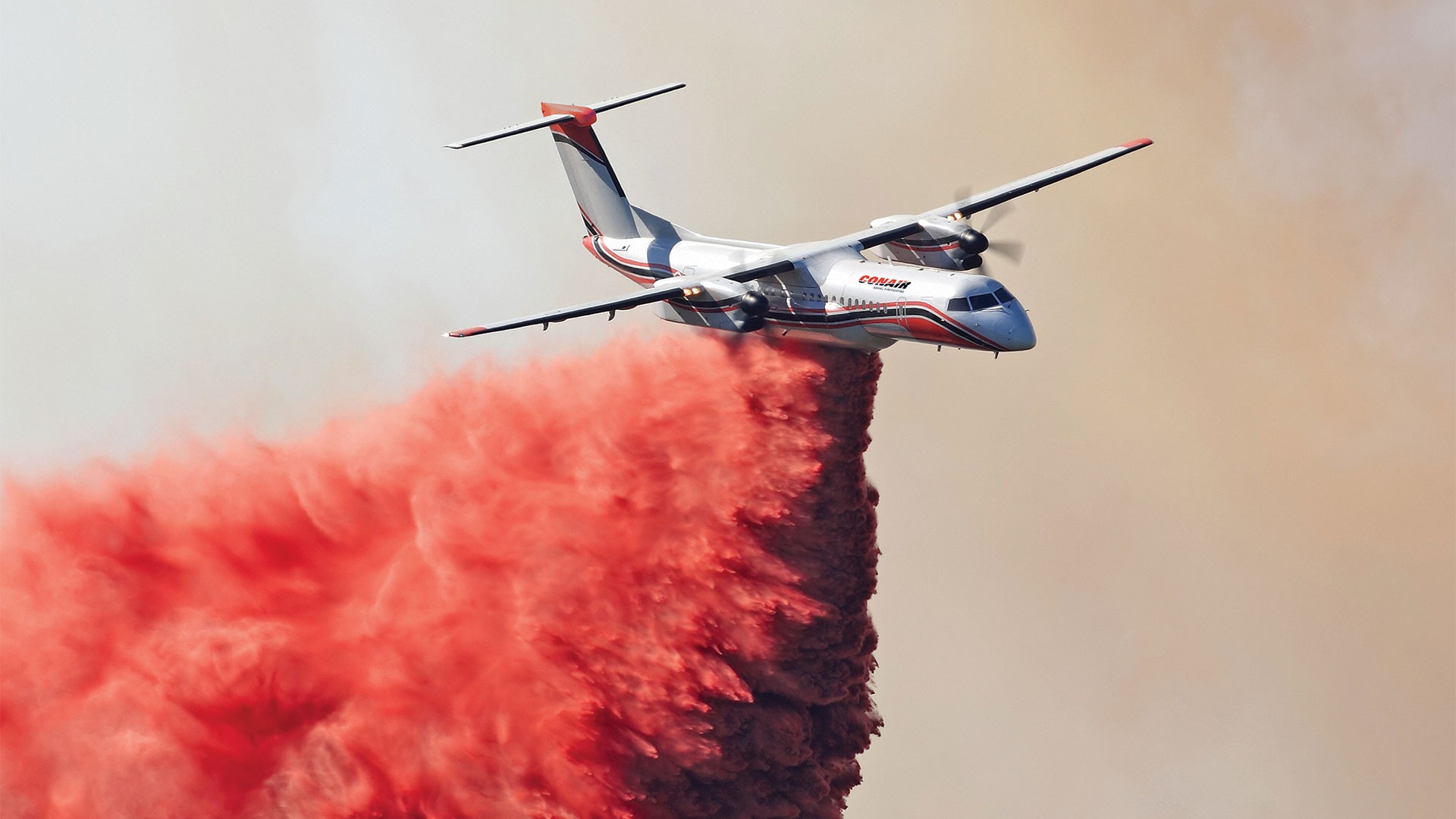

I Am Working Out At Palmer Alaska At The Moment And I Have Some Neat Photos Of Tanker 540 Coming In After Working A Fire And Taking Off As Well As Parked On The Deck.. Beautiful Aircraft